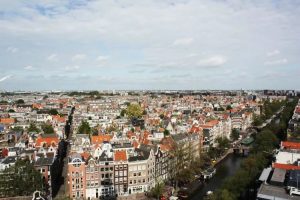

Amsterdam Smart City

Amsterdam, one of the first smart cities, is also the largest city in the Netherlands, with more than 400,000 households, accounting for one-third of the country's carbon dioxide emissions. Many residents are actively involved in the design and construction of the eco-city. To create a smart city, in addition to solving the survival problems of residents so that they can live and work in peace and contentment and live in harmony with the environment, the effective use of resources and stable economic growth should also be closely combined. In order to improve environmental issues, the city has launched two projects (WestOrange project and Geuzenveld project) to reduce carbon dioxide emissions and energy consumption through energy-saving and smart technologies. The main content of the Geuzenveld project is to install smart meters and energy feedback display devices for more than 700 households, to promote residents to be more concerned about their own energy use, and to learn to establish household energy-saving solutions. In the WestOrange project, 500 households will install and use a new type of energy management system on a trial basis, with the aim of saving 14% of energy while reducing the same amount of carbon dioxide emissions.
